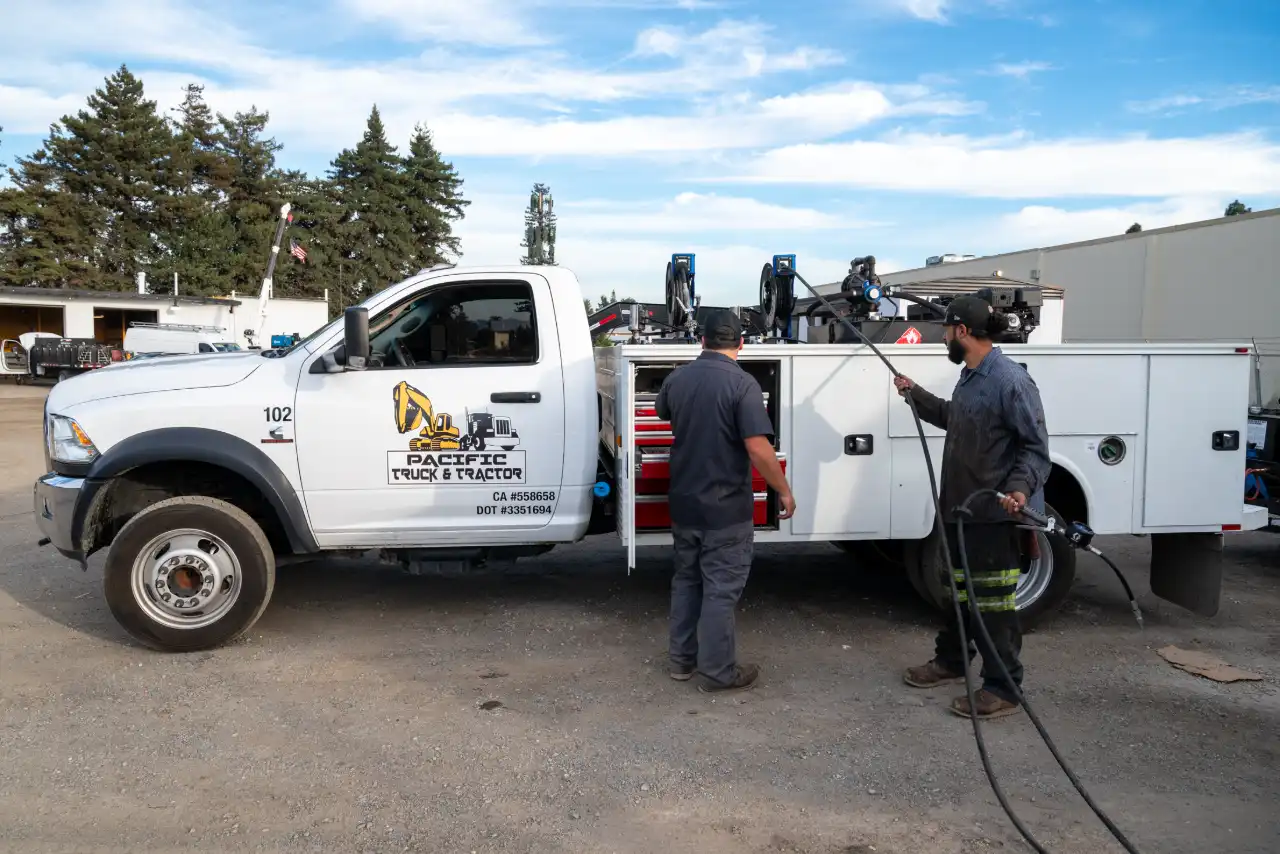July 21, 2025
Hard-Facing vs. Carbide Overlay: A Technician’s Guide to Field Repairs on GET Attachments
Ground-engaging components like bucket lips, cutting edges, and ripper shanks operate in abrasive, impact-prone environments that erode steel, decreasing productivity and increasing costs. Hard-facing and carbide overlay are two cost-effective protection strategies for Pacific Truck & Tractor.

When you’re working in dirt, rock, and sometimes truly nasty terrain, your Ground Engaging Tools (GET) endure the most abuse. Whether it’s an excavator bucket, dozer blade, or grader edge, wearing protection isn’t optional—it’s essential. Two of the most common repair and reinforcement methods used in the field are hard-facing and carbide overlay. Both enhance wear resistance, but they do so in quite different ways. Knowing which one to choose can determine the success of your repair job.
What is Hard-Facing?
Hard-facing involves welding a tough, wear-resistant material onto your GET attachment's surface. Technicians apply a layer of alloy—typically containing chromium, manganese, or tungsten—using stick, MIG, or flux-cored wire welders on areas experiencing heavy wear. Once cooled, this layer acts as a sacrificial shield, absorbing abrasion and protecting the underlying metal.
Pros of Hard-Facing
- Affordable for most repair budgets.
- Flexible—adapts to curved, flat, and irregular surfaces.
- It can be applied multiple times.
Cons of Hard-Facing
- Applying it correctly in the field requires skill.
- Takes more time than certain overlay methods.
- Welding heat can change the properties of the base metal if not properly managed.
What is Carbide Overlay?
Carbide overlay, or tungsten carbide impregnation, enhances wear resistance by embedding tough tungsten carbide particles into a metal matrix, usually a mild steel plate, through specialized welding or brazing techniques. This overlay is then attached to the GET surface by welding or bolting, serving as an armor plate.
Pros of Carbide Overlay
- Tungsten carbide has an exceptional hardness, standing around nine on the Mohs scale.
- Performs excellently under extreme abrasion, particularly in soils with high silica or quartz content.
- Extended service intervals prior to rework.
Cons of Carbide Overlay
- More costly initially than hard-facing.
- It is heavier and can impact the tool's balance.
- Shaping for complex curves is more challenging.
Which One Should You Use?
The appropriate choice varies based on the wear conditions, budget limits, and available downtime.
- Light to Moderate Abrasion, Budget Priority: Choose hard-facing; it's more cost-effective, adaptable for on-site tasks, and simpler to rework in the field.
- Extreme Abrasion, Long-Life Priority: Choose carbide overlay for durability. While it requires a larger initial investment, it provides an exceptional lifespan in harsh conditions.
Field Repair Considerations
1. Surface Prep is Non-Negotiable
Whether you’re applying hard-facing beads or welding on a carbide plate, it's essential to start with clean metal. Use grinders, wire wheels, or even carbon arc gouging to remove dirt, rust, and old welds.
2. Heat Control Matters
Excess heat can damage the base steel or cause cracks in hard-facing and carbide overlays. To preserve the quality of your work, use short weld passes, staggered beads, and cooling breaks.
3. Match Material to Wear Pattern
Rather than covering the whole surface, concentrate on pinpointing impact zones and areas subject to sliding abrasion. Hard-facing is generally most effective on leading edges, whereas carbide overlay works well on flat surfaces that experience continuous sliding wear.
4. Plan for Maintenance
Even the most durable overlay will eventually degrade. Keep track of repair times and update your choice if you detect early failures.
Safety First
Working in the field often requires welding in difficult conditions like wind, rain, and uneven terrain. Always make sure to prepare and adjust your approach accordingly.
- Wear complete PPE, including a welding helmet, gloves, leather clothing, and a respirator.
- Use wind shields whenever possible to maintain strong weld integrity.
- Fix the attachment to keep it from moving during repair.
Final Word
Both hard-facing and carbide overlay have their place in a heavy-duty technician’s toolbox. Think of hard-facing as your dependable all-rounder and carbide overlay as your heavyweight champion. Pick the right fighter for the job, and your GET attachments will stand up to the punishment San Lorenzo’s toughest worksites can throw at them.

